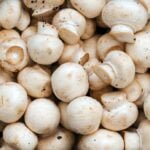How much Water i need for growing shiitake
Title: Growing Shiitake Mushrooms: The Essential Role of Water in Cultivation
Introduction:
When it involves growing shiitake mushrooms, water performs an important position of their development and manufacturing. The correct quantity of moisture within the substrate is essential for offering optimum situations for profitable shiitake cultivation. Although the precise amount of water required could fluctuate, on this blog submit, we’ll discover the importance of water in growing shiitake mushrooms and supply basic tips that will help you preserve an acceptable moisture degree all through the cultivation course of.
1. Water as a Necessity for Shiitake Mushroom Growth:
Shiitake mushrooms thrive in a moist atmosphere, as water is crucial for their metabolic processes, development, and improvement. Adequate moisture content material supplies a positive habitat for mycelium colonization and encourages the formation of fruiting our bodies (mushrooms).
2. Maintaining Proper Moisture Levels:
To domesticate shiitake mushrooms efficiently, it’s essential to keep up constant moisture ranges throughout the substrate. The substrate, or growing medium, sometimes consists of hardwood sawdust, supplemented with different natural supplies similar to wheat bran or rice bran.
3. Watering Techniques for Shiitake Mushroom Cultivation:
a. Initial Moistening: Before beginning the cultivation course of, the substrate must be hydrated. This may be achieved by totally moistening the substrate with water till it reaches an appropriate moisture content material. Use a misting bottle or sprayer to evenly distribute water all through the substrate.
b. Soaking Method: After moistening the substrate initially, some cultivators make the most of a soaking methodology. This entails submerging the hydrated substrate in water for a number of hours or in a single day to realize the specified moisture ranges. Ensure the substrate is totally submerged and gently agitate it to take away any air pockets.
c. Mist or Spray Watering: Throughout the cultivation course of, it’s important to watch the moisture ranges usually. Maintaining a constant humidity degree will facilitate the expansion of shiitake mushrooms. A misting bottle or sprayer can be utilized to spray water over the substrate as wanted, guaranteeing it stays adequately moist.
4. Avoiding Excess Moisture:
While water is important for growing shiitake mushrooms, extreme moisture can result in detrimental results similar to mould or bacterial development. It is crucial to strike the best steadiness, permitting for sufficient water for mushroom development whereas stopping the surplus accumulation of moisture. This may be achieved by guaranteeing correct drainage of extra water and adjusting watering methods accordingly.
5. Environment and Moisture Control:
a. Fruiting Room Humidity: Once your shiitake mushrooms have reached the fruiting stage, they require a selected humidity degree for optimum improvement. This may be achieved by utilizing a humidifier or rigorously spraying water within the fruiting room to keep up the specified humidity vary.
b. Ventilation: Adequate air circulation is essential in controlling moisture ranges. Proper air flow helps forestall the buildup of extreme moisture, lowering the chance of mould or fungi development.
Conclusion:
Water is an indispensable element in growing shiitake mushrooms on account of its position in supporting their development and improvement. While the precise amount wanted could fluctuate relying on varied elements, sustaining correct moisture ranges all through the cultivation course of is important. By adhering to basic tips and usually monitoring moisture ranges, you possibly can optimize your probabilities of profitable shiitake mushroom cultivation. Remember to strike the best steadiness, prioritizing acceptable moisture with out permitting for extra accumulation.
(Note: The certain amount of water required for growing shiitake mushrooms could fluctuate relying on a number of elements such because the substrate used, environmental situations, and cultivation strategies. Provide basic tips with out specifying exact measurements.)




